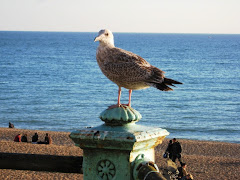
Forget the Sloane Rangers and Hooray Henries – this week,
It is, unquestionably, the highest profile gardening event in the world, and sets the trends in gardening for the year ahead. But it’s also very firmly rooted in tradition – those young, brash and confident garden designers can still be reduced to quivering wrecks when the Royal Horticultural Society’s venerable judges (and, boy, do they look intimidating) poke and prod around their creations.
One of the greatest challenges for the exhibitors, be they garden designers or flower arrangers, is trying to get all their blooms in pristine condition at the same time for the few days of the show. This is vastly more challenging than it sounds: many of the plants do not naturally flower at this time of the year, and those forced just a little too much may retaliate by wilting gracefully at the key moment.
Tips of the trade include using flowers like ornamental Alliums (ie the Onion family) which are both robust and dramatic, to ensure that their displays look tip-top. Grasses are always popular too, although this could be regarded as cheating given that they’re not really there for their flowers. Indeed, Tom Stuart-Smith’s winning garden is predominantly green, set off by greys from man-made elements.
Another facet of
And finally, there’s the aesthetics of gardening which, ultimately, this is all about. Forget the high profile stainless steel daisies in Diarmuid Gavin’s gardens: elsewhere, blues, pinks and whites always predominate (and green, of course) – but not yellow. There is a strong tradition that every colour works well together, except yellow. I think this is rather a pity, as I love vibrant yellows and oranges in flowers, but then I don’t make any great claims to be an aesthete or a garden designer. I just know what I like...



No comments:
Post a Comment